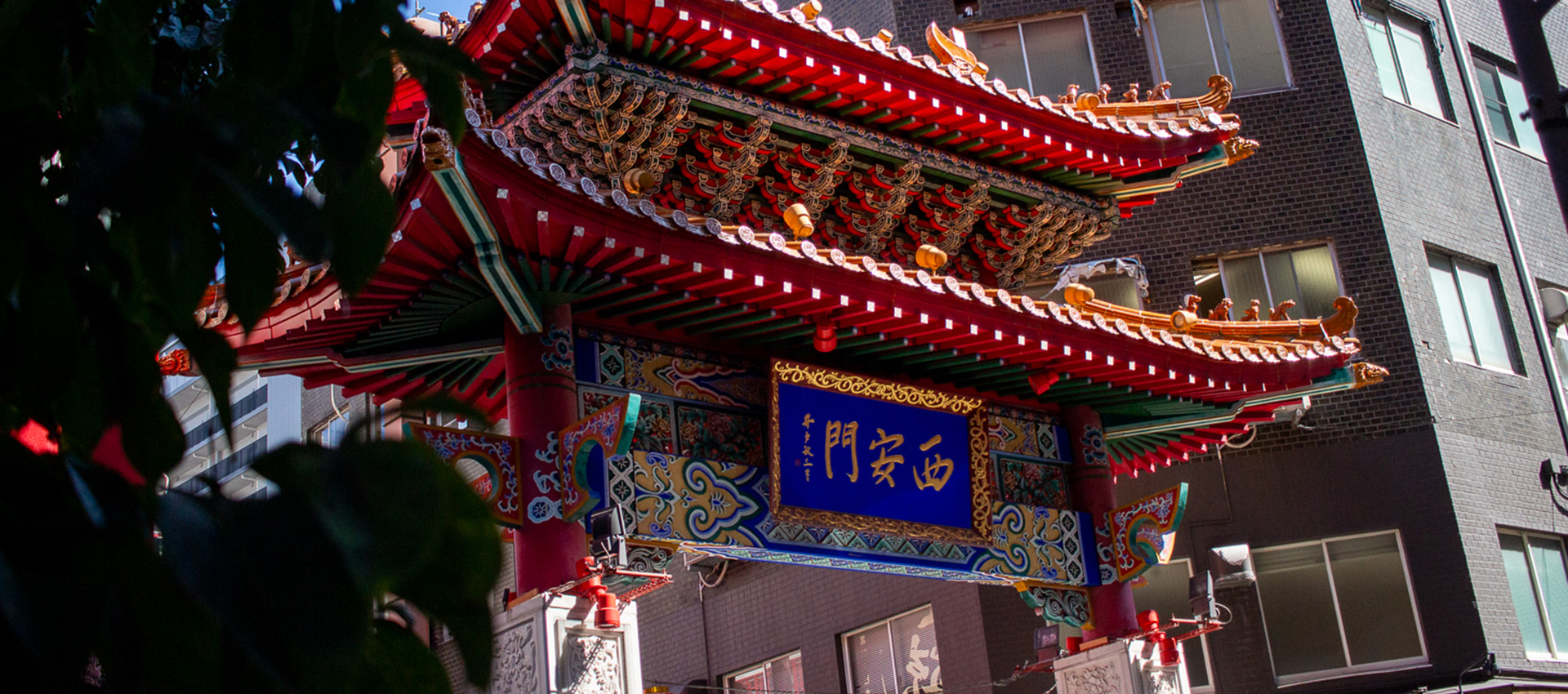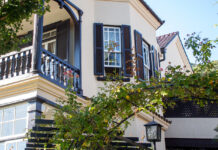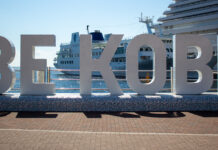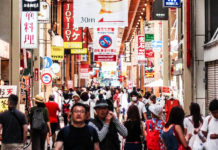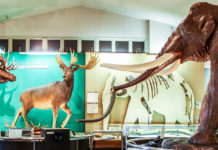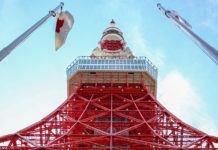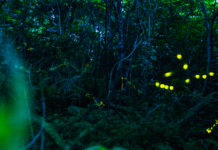If you’re heading to Kobe, be sure to check out Kobe Chinatown Nankinmachi. This historic shopping and dining district contains around 100 shops and restaurants and spans a 270m by 110m area, making it one of the three largest Chinatowns in Japan, alongside Nagasaki and Yokohama. It’s the perfect place to stroll and enjoy street food, settle in for a bountiful meal at one of the many popular restaurants, or simply watch the world go by.
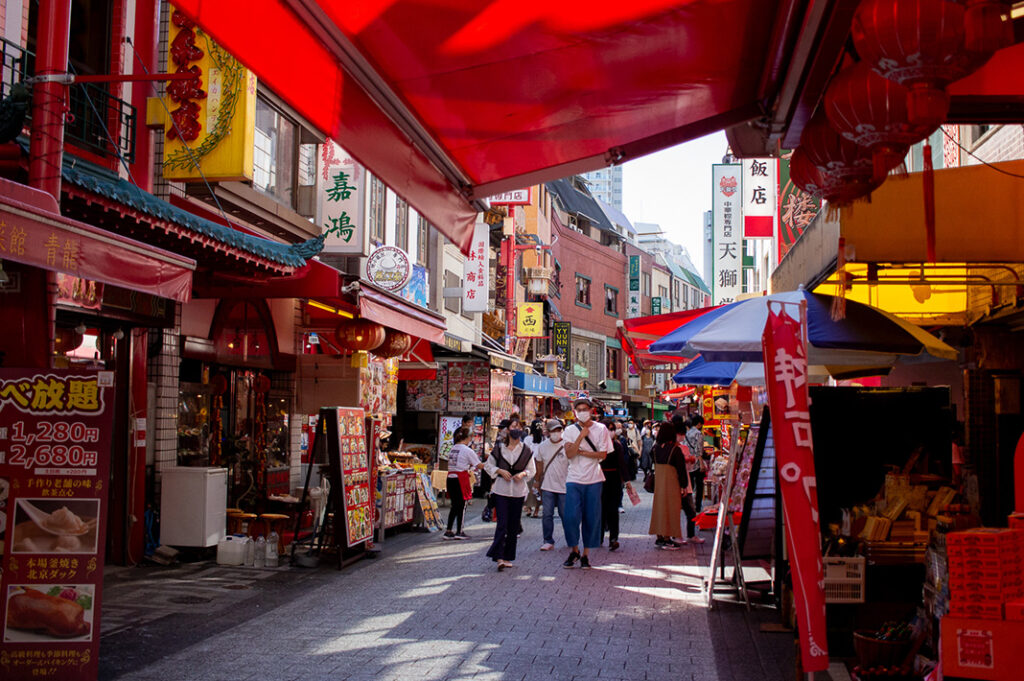
Kobe Chinatown origin story
After Japan’s 200 year closed country policy (Sakoku) ended in 1858, Kobe eventually opened a port and began welcoming foreigners from 1868. Unfortunately, because there was no treaty between Japan and China in those days, Chinese settlers were unable to live in the official foreign settlement. Instead, they set themselves up around what we now know as Nankinmachi, a name meaning “Nanjing Town” after the former Chinese capital.
Ever since those days, Nankinmachi has imbued a resilient pioneer spirit, coming together to rebuild after total destruction in World War II, and again after damage from the 1995 Great Hanshin Earthquake. Lucky for us, it is still prospering today, so we may enjoy the many delights on offer.
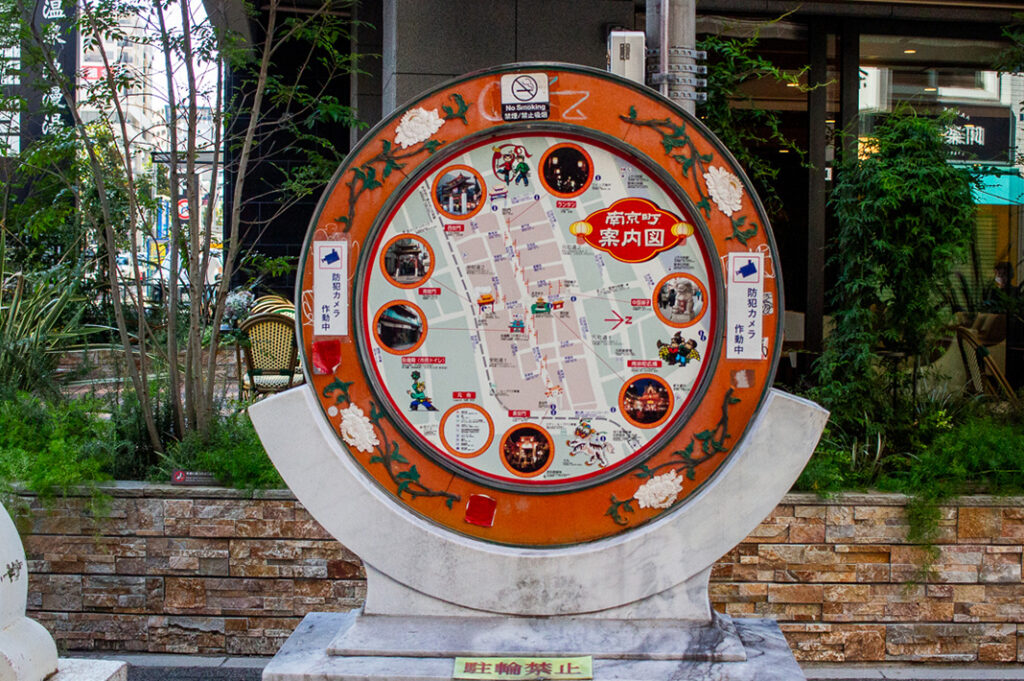
Exploring Nankinmachi
Kobe Chinatown is laid out in an easy-to-navigate grid with two main roads intersecting in a central square. Off those main roads, you’ll find many smaller alleys full of promise, too.
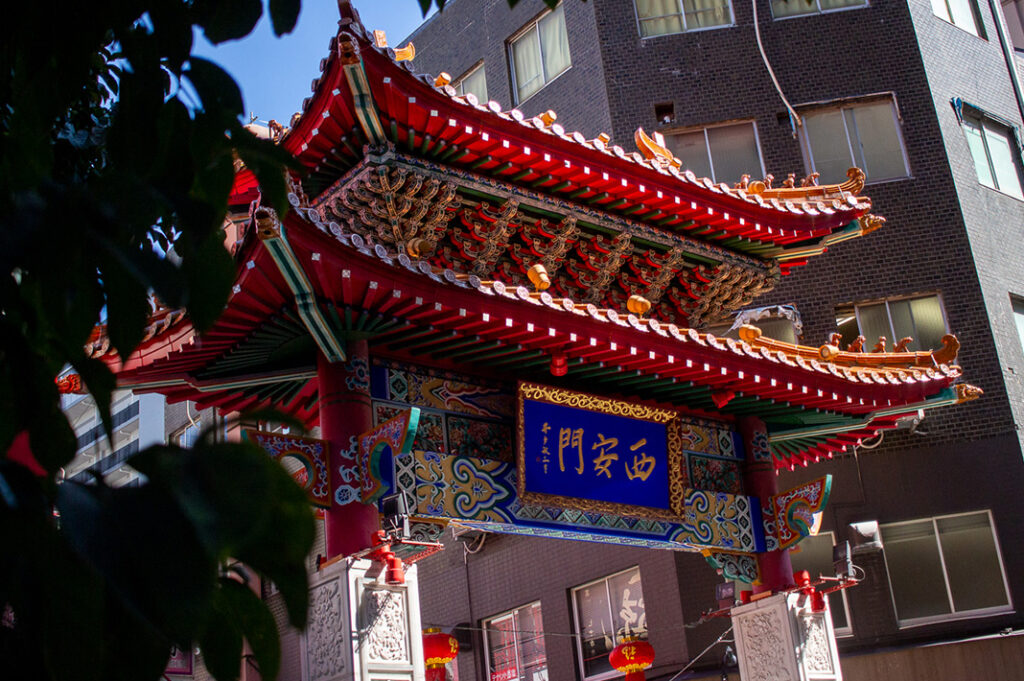
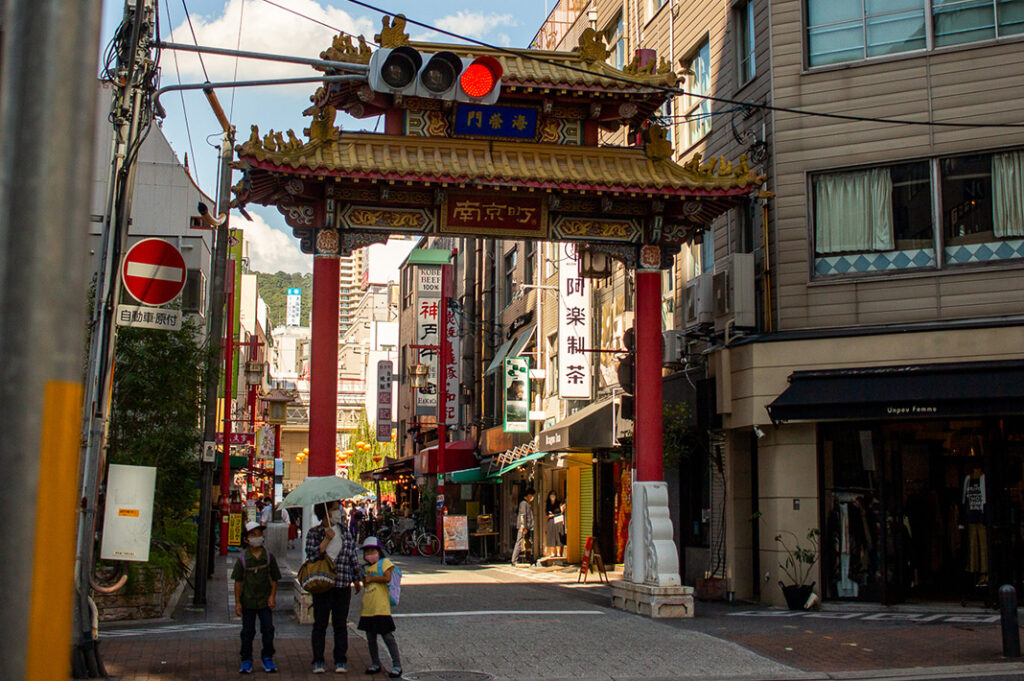
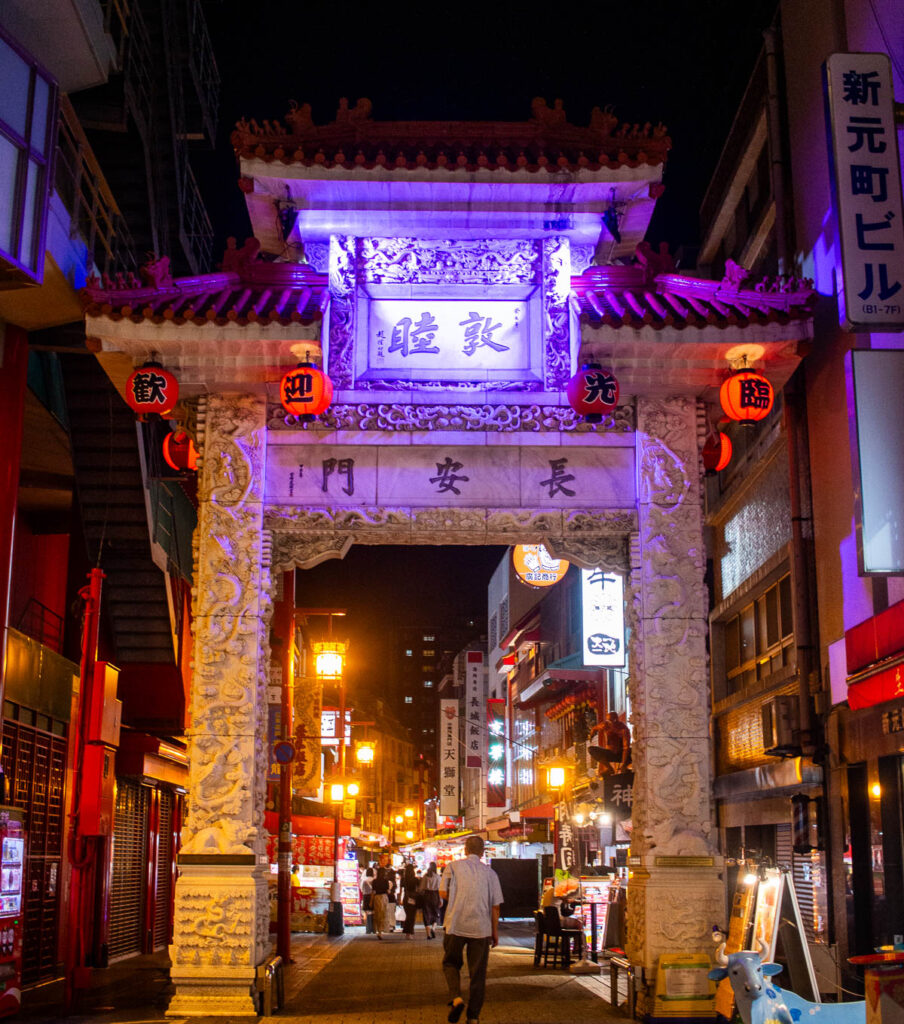
As you walk through, you’re greeted by all the familiar sights: ornate gates at different entry points, lanterns, statues and splashes of red and gold everywhere. The buildings house mahjong clubs, souvenir stores, Chinese grocers, and – of course – restaurants.
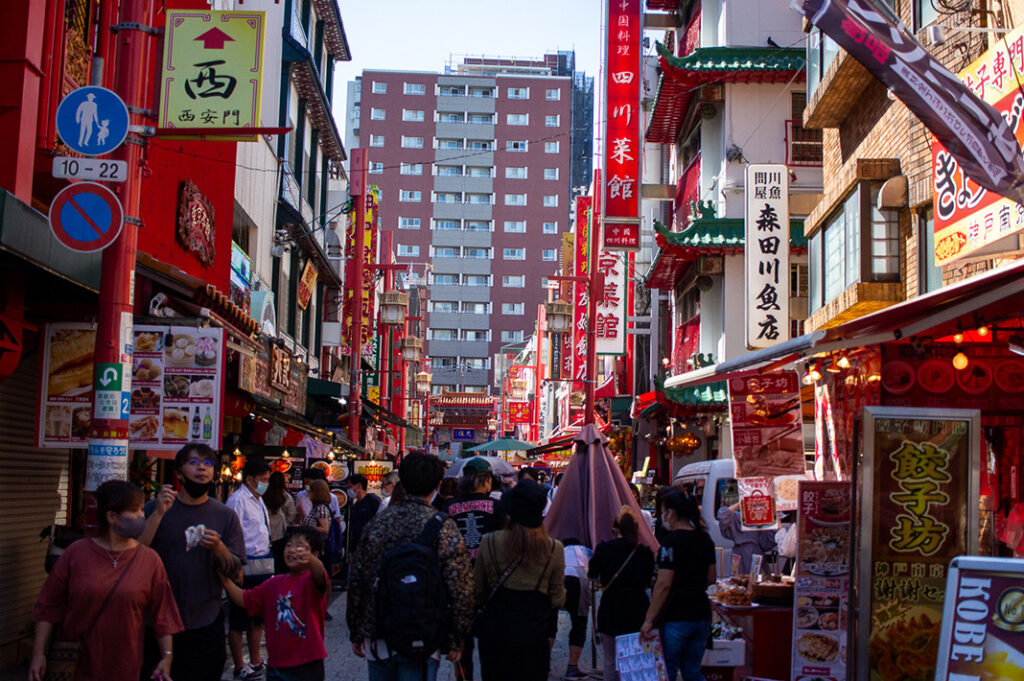
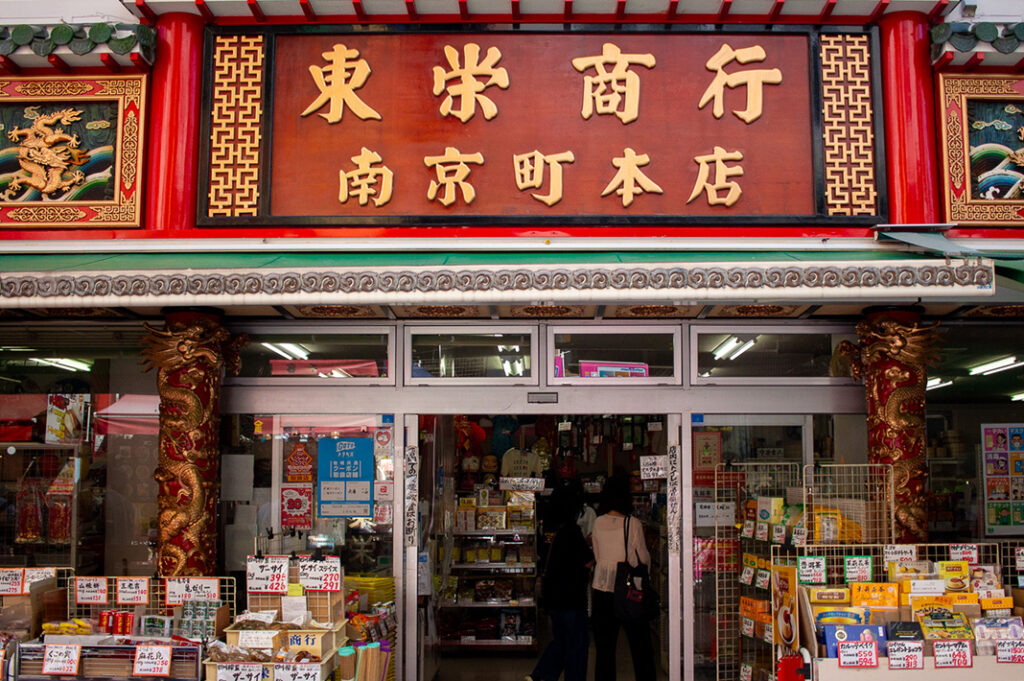
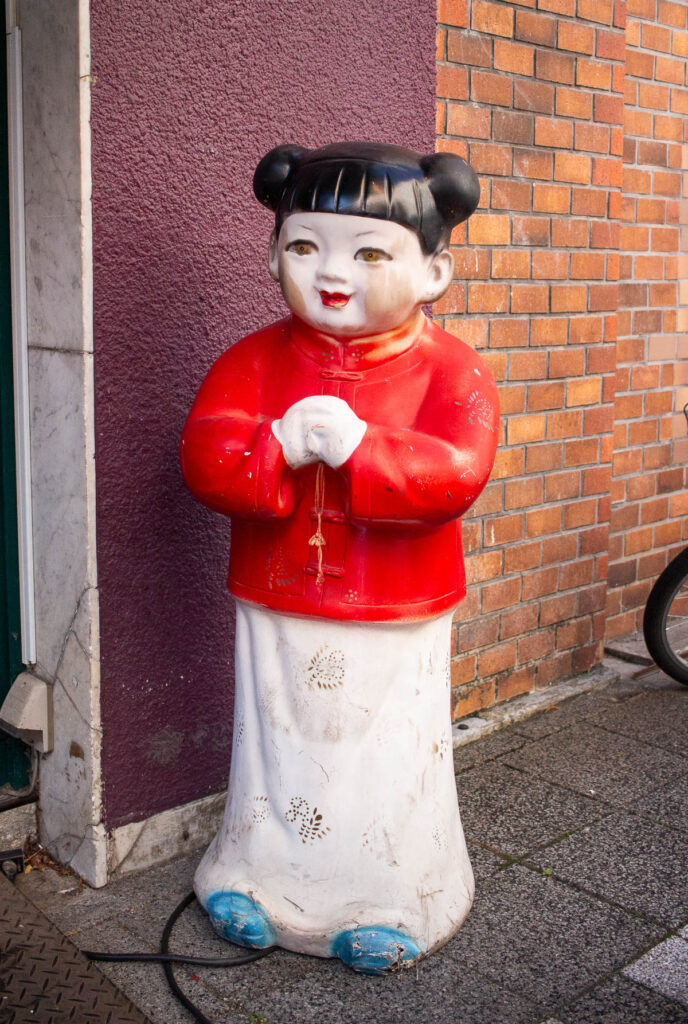
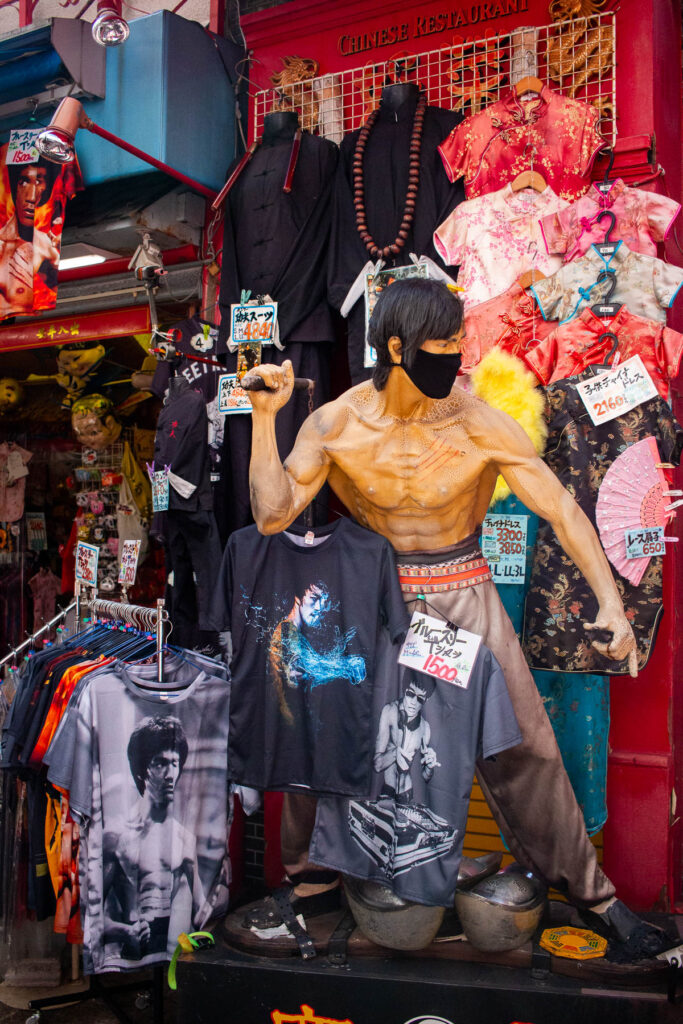
The Food of Kobe Chinatown
There are so many great spots to eat in Kobe Chinatown, representing a mixture of Chinese, Japanese and chūka (Japanese Chinese) cuisines. However, the first thing to catch your eye (or nose) will undoubtedly be the street food.
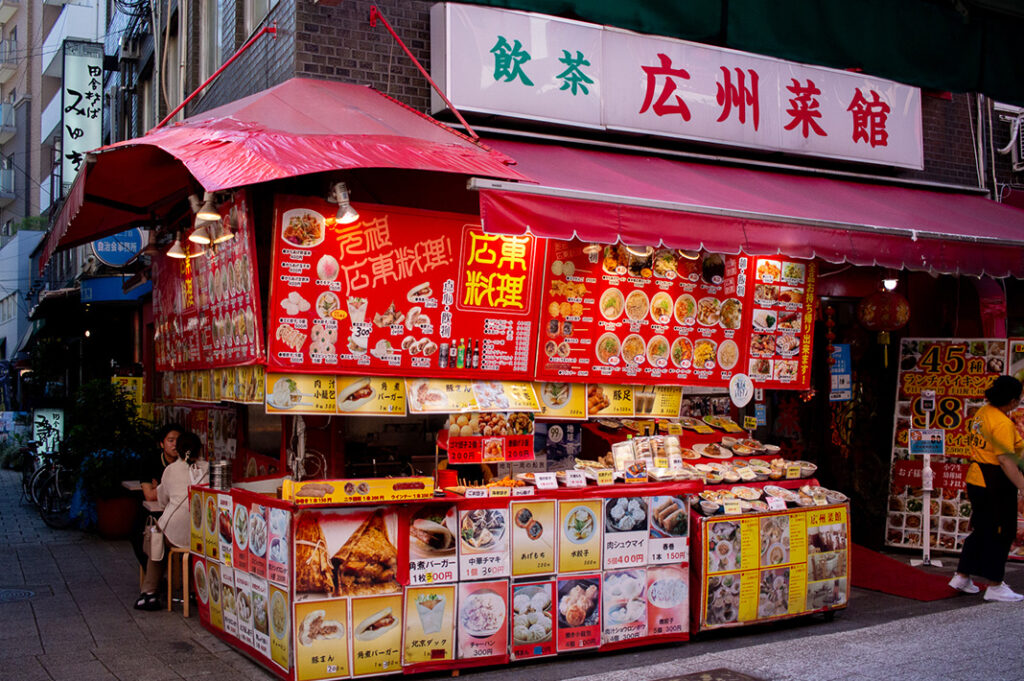
Savoury lovers will be pleased by the selection of dumplings, kakuni pork belly buns, steamed buns, Peking duck pancakes, and even chimaki (bamboo leaf parcels containing a sticky rice and meat filling).

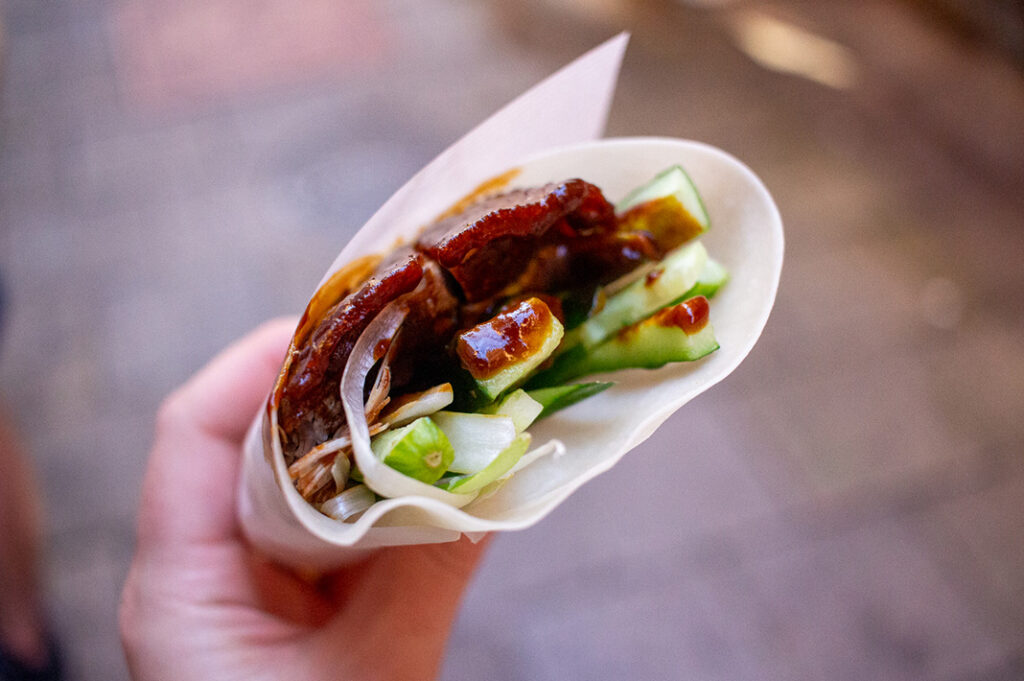
After a few laps scoping out the offerings, grab a bite and watch the foot traffic flow by as you plan out your next meal.
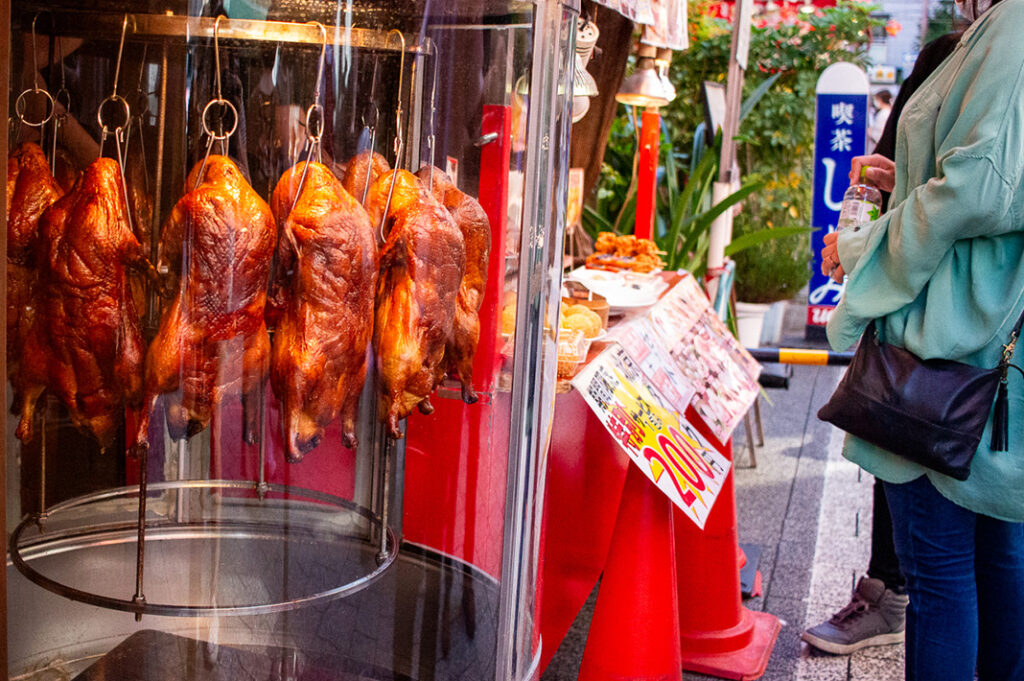
In terms of dine-in restaurants, there are plenty to choose from in Nankin-machi. You’ll see Taiwanese, Cantonese, Shanghai Chinese, gyōza, dim sum, tantanmen and plenty more. The popular establishments are easily spotted thanks to the queues of hungry soon-to-be diners outside. If you don’t mind queuing, jump in one and see what all the fuss is about. If you like to plan ahead, the Nankinmachi official website has a map with information about the different stores.
Gyōza break
We were in the mood for dumplings and followed a tip to Gyōza Daigaku located in the North-west quadrant. Though many would think gyōza to be a Japanese dish, it was in fact derived from North Eastern Chinese cuisine.
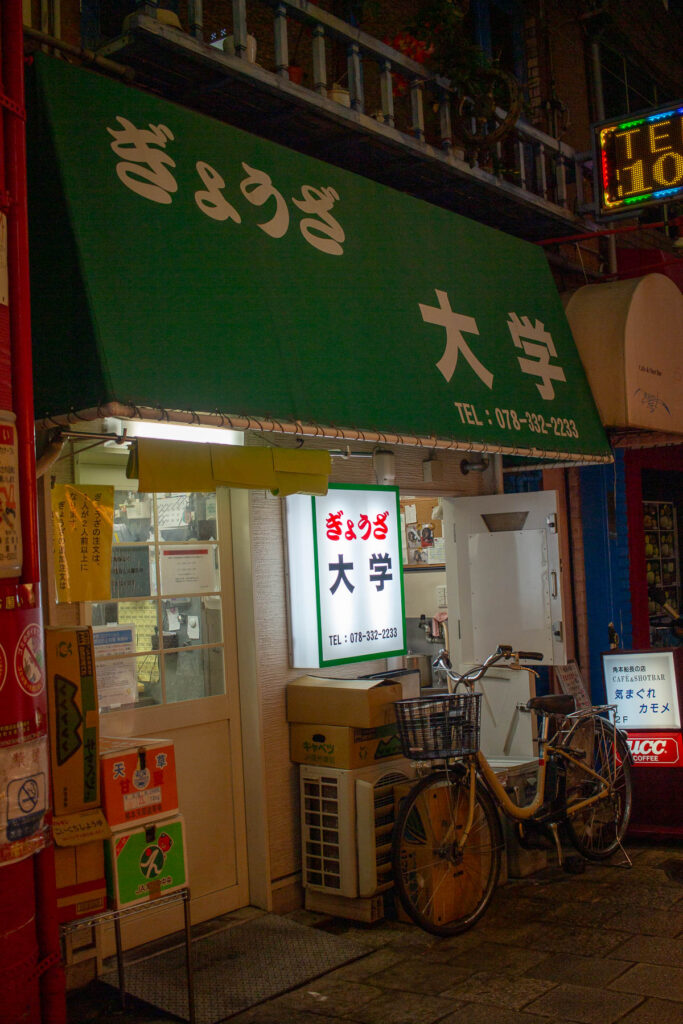
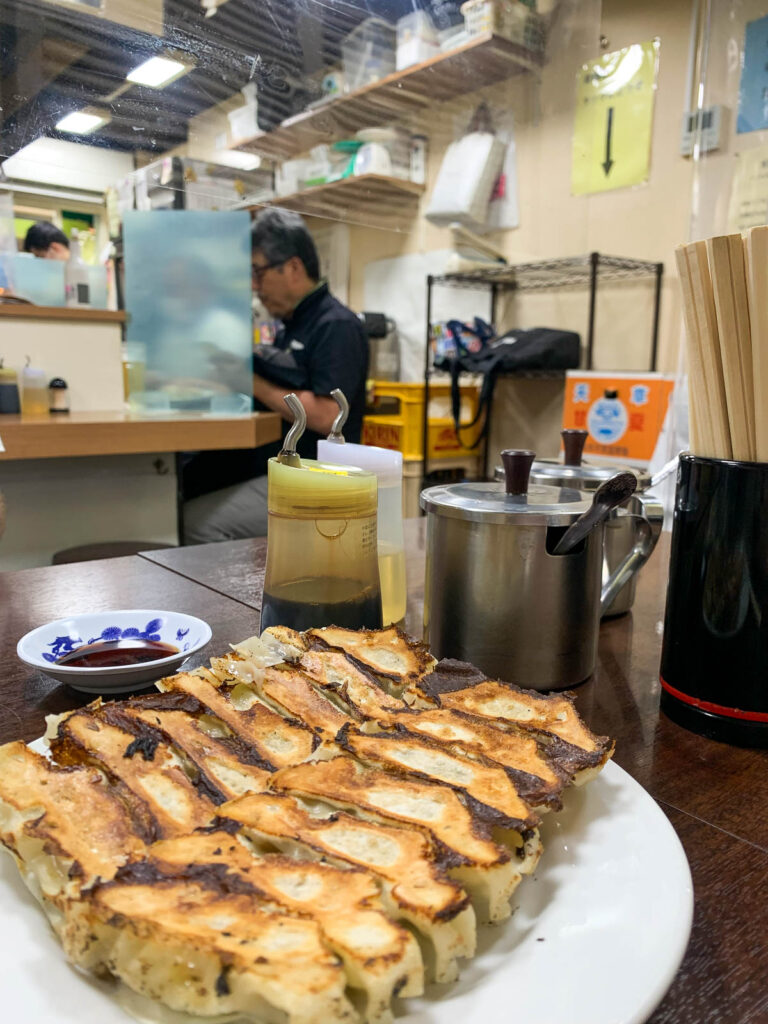
This tiny establishment tucked away in an alley wasn’t much to look at, but the crowd of people waiting to get in was encouraging. The turnover was quick, with staff coming out to take our order ahead of entry. It’s important to note that you cannot order more once you’re in, so choose wisely. The menu is simple, so just grab a bunch of gyōza and you’ll be happy. Inside was a no-frills dining experience where we tucked into our plates of dumplings with a side of locally-loved miso sauce. Hot, fresh, flavourful – what’s not to like? Also important to know: it’s cash only.
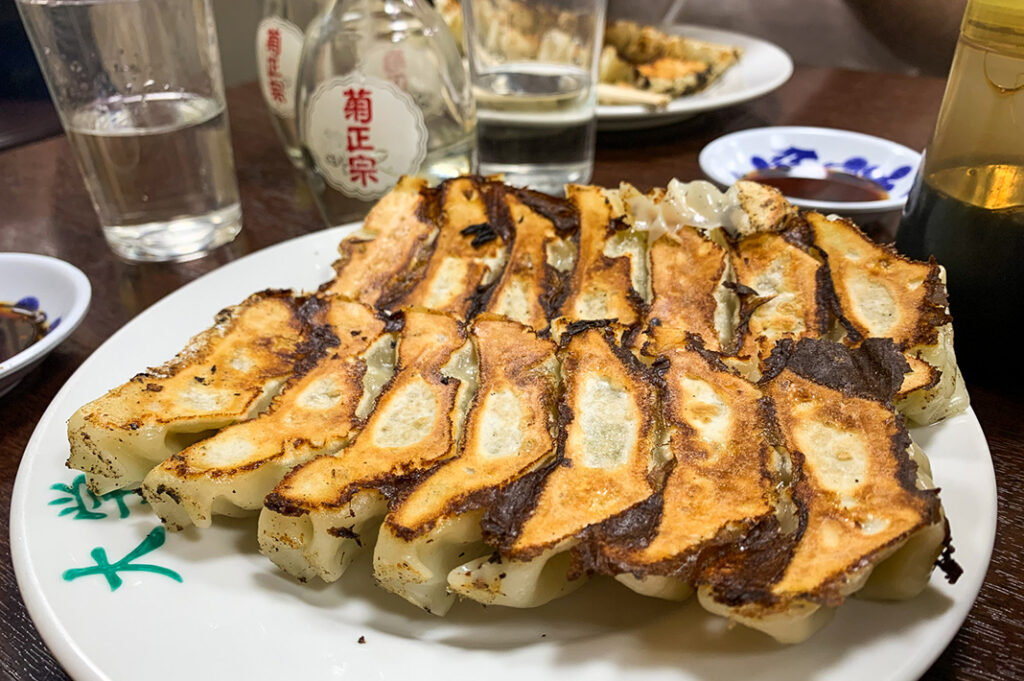
Nankinmachi Events
Chinese New Year is the king of events here in Nankinmachi, celebrated in January or February depending on the Lunar calendar. The area comes alive with music, dancing, costumes and of course the dragon dance.
Around May-June, the area holds the Dragon Boat Festival where it’s all about enjoying chimaki (bamboo leaf parcels containing a sticky rice and meat filling). In September-October, the mid-Autumn Festival is another big event, second only to New Years. Then when the weather cools off in December, the area is warmly lit with Chinese lanterns, creating the perfect atmosphere for an evening stroll and dinner. You can read more about the events of Nankinmachi here.
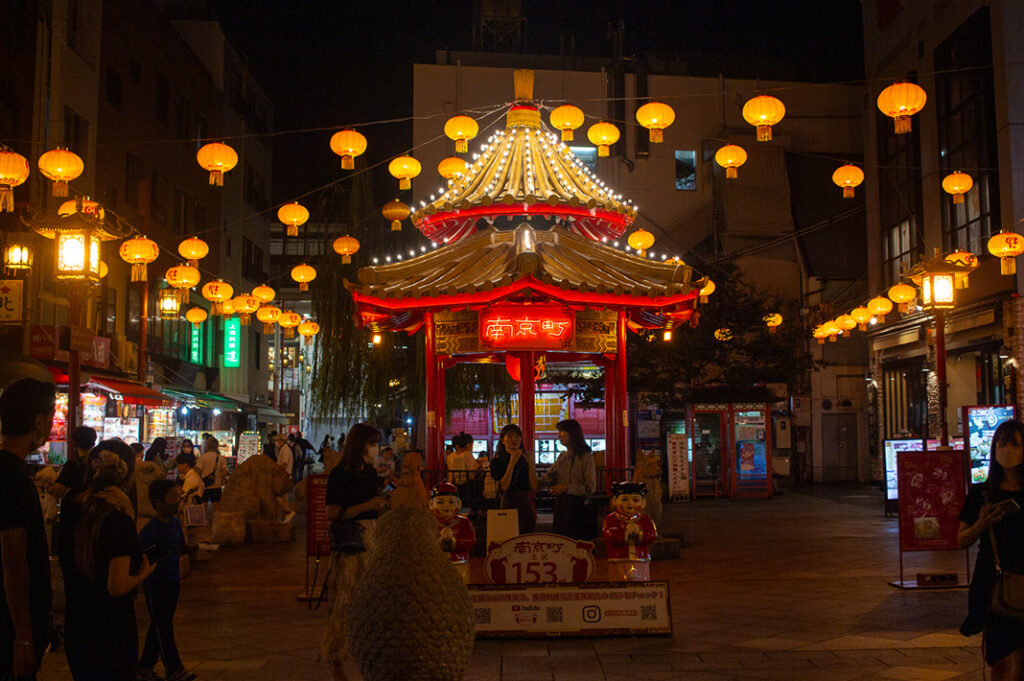
How to get there
Kobe Chinatown is within short walking distance of two train stations. From Kyukyoryuchi-Daimarumae Station (Kaigan subway line), it’s around 2 minutes’ walk, and from Motomachi Station (JR Hanshin Line) it’s around 5 minutes’ walk.
Name: Kobe Chinatown Nankinmachi
Website: here
Post by Japan Journeys.



